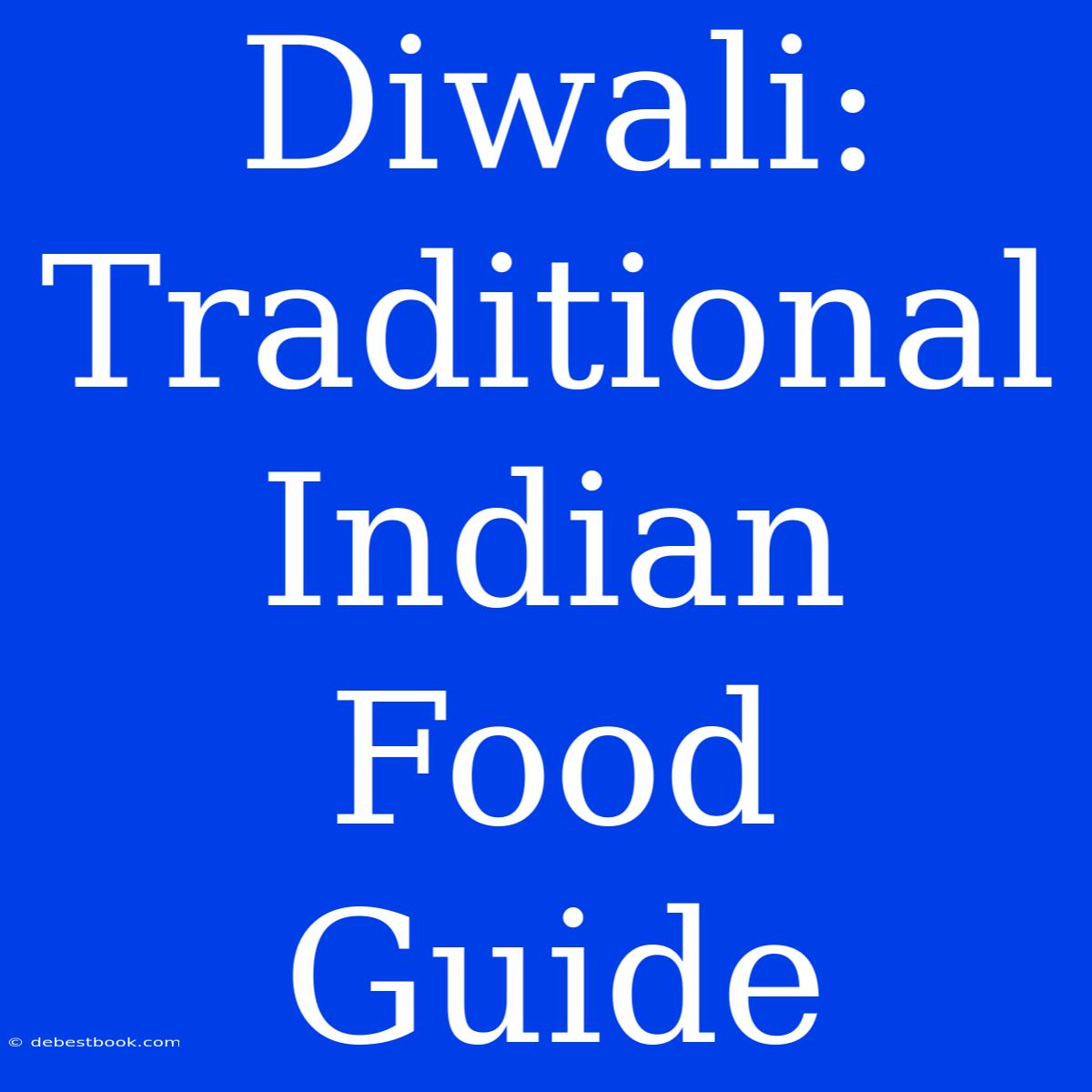Diwali: Traditional Indian Food Guide - A Festive Feast for the Senses
Diwali, the Festival of Lights, is a time of joy, celebration, and togetherness in India. And what better way to mark this auspicious occasion than with a delicious feast of traditional Indian delicacies? This guide delves into the vibrant world of Diwali food, exploring the significance of each dish and how to create a memorable dining experience.
Editor Note: This Diwali Food Guide offers a comprehensive overview of traditional Indian dishes enjoyed during the festival. Whether you're a seasoned home cook or a curious newbie, this guide provides insights into the flavors and symbolism behind these special dishes.
Why is this guide important? Diwali food is more than just a meal; it's a cultural expression of love, gratitude, and prosperity. Each dish holds a special meaning, reflecting the spirit of the festival. This guide will help you appreciate the historical and culinary significance of these dishes and recreate their magic in your own home.
Our Analysis: We have scoured authentic recipes, explored regional variations, and consulted culinary experts to bring you a comprehensive guide to Diwali food. This guide delves into the significance of each dish, provides tips for preparation, and offers suggestions for a festive menu.
Key takeaways from this Diwali Food Guide
| Category | Description |
|---|---|
| Sweet Treats | Sweets symbolize prosperity and joy. |
| Savory Dishes | Savory dishes represent good health and fortune. |
| Regional Variations | Different regions have unique Diwali specialities. |
Diwali Food: Unveiling the Culinary Tradition
Sweets
Introduction: Sweets play a central role in Diwali celebrations, symbolizing prosperity and sweetness in life. The aroma of freshly made sweets fills the air, adding to the festive atmosphere.
Key Aspects:
- Mithai: A diverse range of traditional sweets like Ladoo, Barfi, Gulab Jamun, and Jalebi.
- Significance: Represents good luck, abundance, and sharing joy with loved ones.
- Regional Delights: Each region boasts its unique sweets like Mysore Pak (South India) and Ghevar (North India).
Discussion:
Diwali sweets are not just delicious; they are meticulously crafted to reflect the spirit of the festival. Their vibrant colors, intricate designs, and delicate flavors represent the joy and vibrancy of the occasion.
Savory Dishes
Introduction: Savory dishes are a vital part of Diwali meals, reflecting the importance of good health and fortune. These dishes are typically rich, flavorful, and prepared with special ingredients.
Key Aspects:
- Snacks: Popular snacks like Pakoras, Samosas, and Chaat are enjoyed throughout the festival.
- Main Course: Dishes like Aloo Gobi, Dal Makhani, and Chicken Curry are staples for festive gatherings.
- Significance: Represents the abundance of blessings and good health in life.
Discussion:
Savory Diwali dishes are a testament to the culinary diversity of India. Each dish offers a unique flavor profile, blending spices, herbs, and ingredients in perfect harmony.
Regional Variations in Diwali Food
Introduction: Diwali celebrations are diverse across India, with each region showcasing its unique culinary traditions. This section explores some of the most notable regional variations in Diwali food.
Key Aspects:
- Northern India: Famous for its rich, creamy, and spiced delicacies like Dahi Bhalle, Ghevar, and Besan Ladoo.
- Southern India: Celebrates Diwali with flavorful, coconut-based sweets like Mysore Pak and Adai (lentil pancake).
- Western India: Known for its savory snacks like Dhokla and Fafda, and sweet delights like Shrikhand and Undhiyu.
- Eastern India: Features a wide variety of sweets like Sandesh, Rasgulla, and Mishti Doi, along with savory dishes like Fish Curry and Chholar Dal.
Discussion: The regional variations in Diwali food highlight the cultural richness of India. Each region's unique flavors and ingredients contribute to the diverse culinary tapestry of the festival.
FAQ
Introduction: Here are answers to some frequently asked questions about Diwali food.
Questions:
- Q: What are some must-try Diwali sweets?
- A: Ladoo, Barfi, Gulab Jamun, Jalebi, and Rasgulla are popular choices.
- Q: What are some traditional savory Diwali dishes?
- A: Samosas, Pakoras, Aloo Gobi, Dal Makhani, and Chicken Curry are widely enjoyed.
- Q: What is the significance of Diwali food?
- A: Diwali food symbolizes prosperity, joy, good health, and fortune.
- Q: What are some regional variations in Diwali food?
- A: Northern India is famous for its rich sweets and savory dishes, while Southern India features coconut-based delicacies.
- Q: Where can I find authentic Diwali recipes?
- A: Many cookbooks, websites, and culinary blogs feature authentic Diwali recipes.
- Q: How can I make Diwali food at home?
- A: With the right recipe and ingredients, you can easily prepare traditional Diwali dishes at home.
Summary: Diwali food is a celebration of tradition, flavors, and cultural heritage. From the vibrant sweets to the savory dishes, each element reflects the spirit of the festival.
Closing Message: As you prepare for Diwali, embrace the joy of sharing these traditional dishes with your loved ones. Let the aroma of freshly made sweets fill your home, and the warmth of togetherness brighten your celebrations. Happy Diwali!

